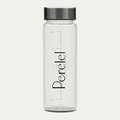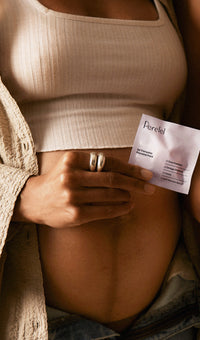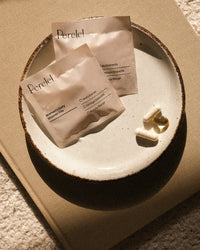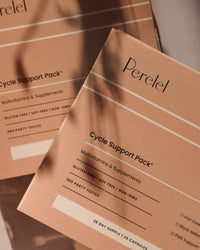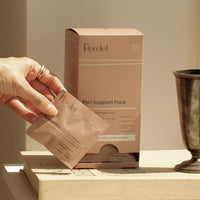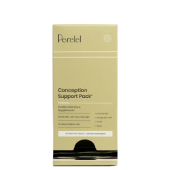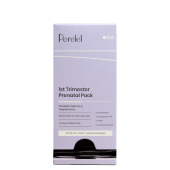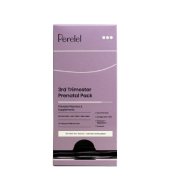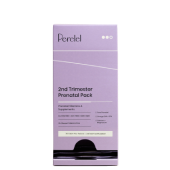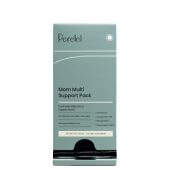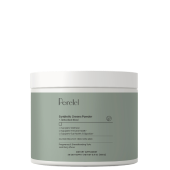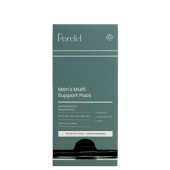Did you know that essentially babies are born three to four months before they’re technically ready for the world? It’s true! Your little one arrives on this Earth before they can smile, coo or even lift their heads up. That’s because if babies “cooked” for as long as they truly needed to, their brains and skulls would be far too big to safely pass through the birth canal. This means it’s up to us to create a womb-like environment after birth so that our babies can feel safe and comforted, and continue to mature. That period of intense caregiving is what is often referred to as the fourth trimester—and here’s how to make it one full of plenty of good sleep.
Before birth, babies are lavished with many sensations—the snug hug and gentle caress of the womb, the jiggly motion from all of Mom’s movements, the loud whooshing sounds from blood pulsing through the uterine arteries. After babies are born, they not only miss those sensations, they need them. These soothing and rhythmic experiences trigger what I’ve dubbed the calming reflex, which is an inborn neurological response that develops deep in a baby’s brain months before they’re born. The calming reflex acts as nature’s “off switch” for fussing and “on switch” for sleep.
To active a baby’s natural calming reflex, parents can best imitate the soothing rhythms of the womb with my 5 S’s for soothing babies: swaddling, shushing, swinging, sucking, and holding baby in the side-stomach position. They work like magic. That’s why for more than two decades thousands of hospitals, parenting groups, military bases, and more have taught the 5 S’s to help babies and parents sail through the fourth trimester.
1. Start with swaddling.
Swaddling recreates the gentle hug and security of the womb, which increases sleep and decreases baby’s startle reflex, where a little one’s flailing arms can bonk them in the face and wake them up. To swaddle correctly, wrap your baby like a mini burrito with their arms snug and straight at their sides, but with their hips loose and flexed. Swaddling needs to stop once babies can roll, but if your baby is sleeping in my SNOO Smart Sleeper, they can remain safely swaddled until they graduate to the crib.
2. Turn on white noise.
Before your baby was born, they were constantly serenaded by the sound of blood flow that was louder than a vacuum cleaner. They love the noise, but hissy fans and ocean sounds just won’t cut it. Instead, the best way to copy-cat that womb sound, is with continuous rough and rumbly white noise. In fact, a study in the Journal of Clinical Nursing found that white noise was particularly helpful in decreasing crying and increasing sleep in colicky babies. Turn white noise on during your nap and night-night routine, then leave it playing all sleep long. If your baby is upset, temporarily increase the volume of your white noise to match the intensity of your child’s crying.
3. Rock your baby.
Life in the womb is very jiggly, and all that movement is calming. Research shows that rocking—and rocking bassinets—reduce crying, help babies fall asleep faster, and improve overall sleep quality. Slow rocking is perfect for keeping quiet babies calm, while faster, tiny motions are just-right for soothing upset little ones. But as tempting as it might be to keep allow your baby to sleep in a baby swing, please know that these devices are not safe for sleep. Your baby’s head can flop forward, possibly obstructing their airway, causing suffocation. For safe sleep, babies should always be on their backs, on firm, flat surfaces.
4. Offer a pacifier.
Many fussy babies relax into a deep state of tranquility when they suck on a pacifier. That’s because sucking lowers a baby’s heart rate, blood pressure and stress levels. As an extra special bonus: Using a pacifier also helps reduce the risk of sudden infant death syndrome (SIDS)—even if the pacifier falls out after your baby nods off. Remember: If you’re breastfeeding, wait until nursing is well-established before introducing a binky.
5. Hold your baby in their feel-good position.
Before birth, your baby never laid flat on their back. Instead, they laid on their side, curled into—wait for it—the fetal position. This position—head down, spine rounded, knees pressed against the belly—activates sensors in their inner ear to keep their calming reflex turned on. While it’s true that the only safe position for a baby to sleep is on their back, you can still tap the calming powers of this position. When your little one is fussy, simply hold your baby on their stomach or side—or even over your shoulder. (Just make sure you always place your bub on their back when you put them to bed.)
6. Let technology help.
For centuries, extended families would be at the ready to help new parents with so many of these 5 S’s, like middle-of-the-night rocking and shushing. But as that village disappeared, so did the help. Enter: SNOO, my responsive baby bassinet that uses safe swaddling, shushing, and swinging to help calm babies and ease them into sleep. Research shows swaddling, sound, and movement work equally well for soothing babies, whether it comes from SNOO or a loving adult. Moreover, SNOO can add 1 to 2 hours of infant sleep each night, making the fourth trimester easier for all.
And... Don't forget about you.
Parents of newborns need TLC, too. Amidst the whirlwind of caring for your baby, it can feel extremely challenging to prioritize your own rest and relaxation. In whatever ways you can, try to get as much sleep as possible (power naps are your friend), and don't be afraid (or embarrassed) to lean on your community (or a babysitty or nanny) if you need some extra support.
Shop the Article:
Start your bedtime routine with Perelel. Shop breastfeeding and pregnancy-safe vitamins for sleep. Read Next: Do this one thing each morning for a better nights' sleep.
This article is for informational purposes only. It is not, nor is it intended to be, a substitute for professional medical advice, diagnosis, or treatment and we recommend that you always consult with your healthcare provider. To the extent that this article features the advice of physicians or medical practitioners, the views expressed are the views of the cited expert and do not necessarily represent the views of Perelel.
